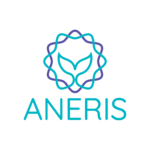ANERIS
Title: operAtional seNsing lifE technologies for maRIne ecosystemS
Funding Source: EU HEurope
Budget IMBBC: 409,375€
Start / End Date: 2023 - 2026
Web site URL: https://aneris.eu/
Project Progress: 71%
Research Directions:
Environmental genomics
Marine biodiversity
Ecology and ecosystem management
Description:
 In ANERIS, we propose to develop the next generation of scientific instrumentation tools and methods for sensing marine life. The design of the new instruments and methods will integrate different types of marine life sensing technologies: genomics, imaging, biooptics and participatory sciences. The technologies will be implemented in a co-design framework, involving all the interested stakeholders: academia, industry, civil society and government. The project proposes the concept of Operational Marine Biology (OMB), understood as a biodiversity information system for systematic and long-term routine measurements of the ocean and coastal life, and their rapid interpretation and dissemination. The production of FAIR Operational Marine Biology data will be carried out in a distributed IT infrastructure built from edge and cloud compute nodes, to be connected with the European Open Science Cloud (EOSC). The technologies will be tested and validated in different case studies, involving the ANERIS innovations, commercial instruments to be improved and different world-class research infrastructures (RI). The project will develop a training program for the operation and use of these new solutions for all the involved stakeholders and particularly the research infrastructures staff. Overall, the project proposes to benefit all the actors involved in the quintuple helix framework of innovation, promoting innovation and knowledge sharing among them: (1) the academy with new life-sensing technologies to use in research; (2) the industry with new technologies and methods to exploit; (3) the governments, with improved observational systems and data products to be used in environmental management directives; (4) the civil society, empowered through the proposed participative technologies and large collaborative networks and (5) the Research Infrastructures, integrating new generation of sensing instruments and methods, and their staff being trained on those new technologies.
In ANERIS, we propose to develop the next generation of scientific instrumentation tools and methods for sensing marine life. The design of the new instruments and methods will integrate different types of marine life sensing technologies: genomics, imaging, biooptics and participatory sciences. The technologies will be implemented in a co-design framework, involving all the interested stakeholders: academia, industry, civil society and government. The project proposes the concept of Operational Marine Biology (OMB), understood as a biodiversity information system for systematic and long-term routine measurements of the ocean and coastal life, and their rapid interpretation and dissemination. The production of FAIR Operational Marine Biology data will be carried out in a distributed IT infrastructure built from edge and cloud compute nodes, to be connected with the European Open Science Cloud (EOSC). The technologies will be tested and validated in different case studies, involving the ANERIS innovations, commercial instruments to be improved and different world-class research infrastructures (RI). The project will develop a training program for the operation and use of these new solutions for all the involved stakeholders and particularly the research infrastructures staff. Overall, the project proposes to benefit all the actors involved in the quintuple helix framework of innovation, promoting innovation and knowledge sharing among them: (1) the academy with new life-sensing technologies to use in research; (2) the industry with new technologies and methods to exploit; (3) the governments, with improved observational systems and data products to be used in environmental management directives; (4) the civil society, empowered through the proposed participative technologies and large collaborative networks and (5) the Research Infrastructures, integrating new generation of sensing instruments and methods, and their staff being trained on those new technologies.


